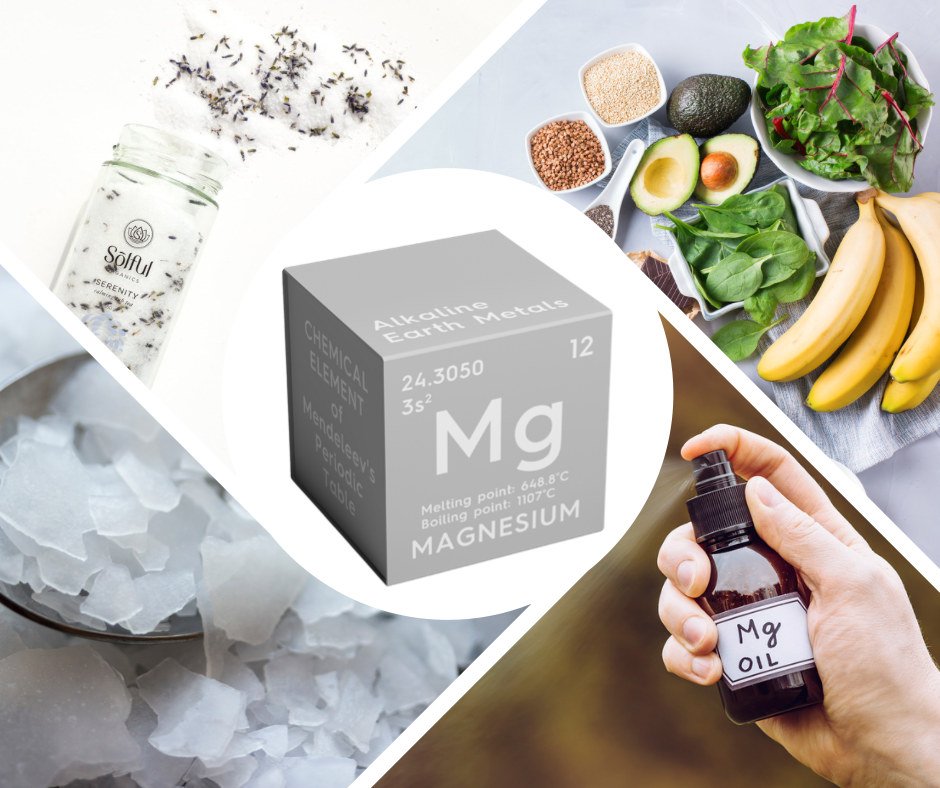Magnesium is a vital mineral that our bodies need for various functions. It plays a key role in muscle and nerve function, energy production, and maintaining a healthy heart rhythm. When it comes to different types of magnesium supplements, each has its own unique characteristics. Magnesium oxide is commonly used and has a higher magnesium content, but it may have a lower absorption rate. Magnesium citrate, and glycinate are known for better absorption, making them a popular choice. Magnesium glycinate is gentle on the stomach and may be a good option for those with digestive sensitivities.
Now, let's talk about magnesium deficiency symptoms. When our bodies lack sufficient magnesium, it can lead to various symptoms.
Here's a list of 10 symptoms of magnesium deficiency and the specific type of magnesium that may help with each:
1. Muscle cramps: Magnesium citrate
2. Fatigue and weakness: Magnesium glycinate
3. Irregular heartbeat: Magnesium taurate
4. Mood changes and anxiety: Magnesium malate
5. Difficulty sleeping: Magnesium threonate
6. Low energy levels: Magnesium orotate
7. Headaches and migraines: Magnesium oxide
8. Restless leg syndrome: Magnesium chloride
9. Digestive issues: Magnesium sulfate
10. High blood pressure: Magnesium lactate
It's important to note that magnesium deficiency is quite common, with many people not meeting their daily magnesium needs through diet alone. One possible reason for widespread magnesium deficiency is the depletion of magnesium in our soil. Modern agricultural practices and over-farming have led to a decrease in magnesium levels in the soil, which in turn affects the magnesium content in our food. Additionally, factors like poor dietary choices, high stress levels, and certain medical conditions can contribute to magnesium deficiency.
Magnesium can be absorbed topically through the skin, and magnesium glycinate is known to be one of the most absorbable forms. When it comes to absorption, it's important to be mindful of the presence of zinc and calcium, as they can reduce magnesium absorption. So, it's best to avoid taking magnesium with these minerals to maximize its absorption.
There are various forms of magnesium intake, including foods rich in magnesium like leafy greens, nuts, seeds, and whole grains. Additionally, there are magnesium supplements available in different forms such as capsules, tablets, and powders. With magnesium being absorbed transdermally so effectively many people also find benefit from using magnesium lotions, sprays, and bath products like magnesium bath flakes or Epsom salts, which can be dissolved in warm water for a relaxing soak. Our Solful Tub Teas are a great way to get in some magnesium transdermal absorption. They all contain magnesium sulphate, but if you are looking for an extra relaxing boost of magnesium our Serenity Tub Tea also contains magnesium chloride.
Each method of magnesium intake has its own advantages. Topical applications like lotions and sprays allow for direct absorption through the skin, while supplements provide a convenient way to ensure adequate magnesium intake. Foods rich in magnesium offer a natural and balanced approach to meeting your magnesium needs. So, are you getting enough magnesium? If you have any of the above symptoms it may be time to look into supplementing with magnesium.
Remember, it's always a good idea to consult with a healthcare professional to determine the best method and dosage for your specific needs.

